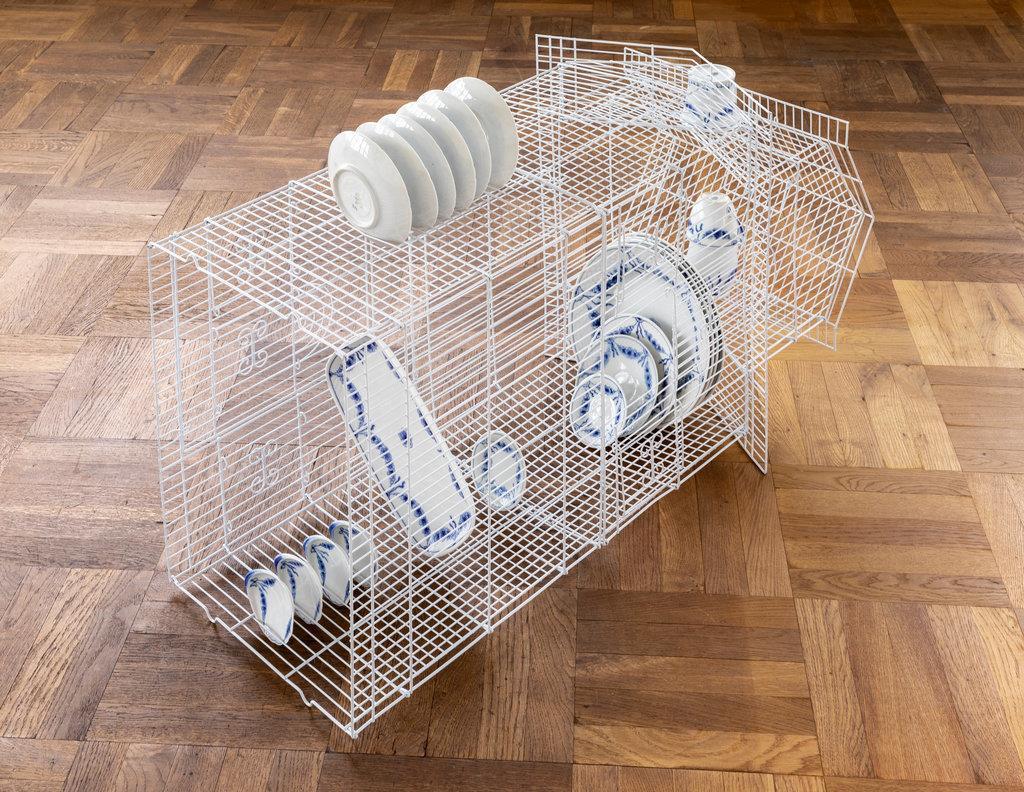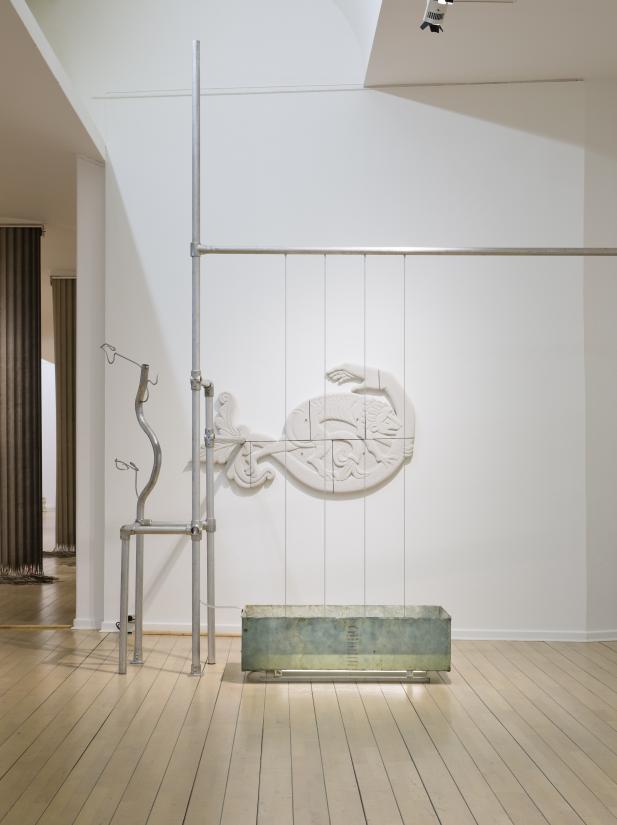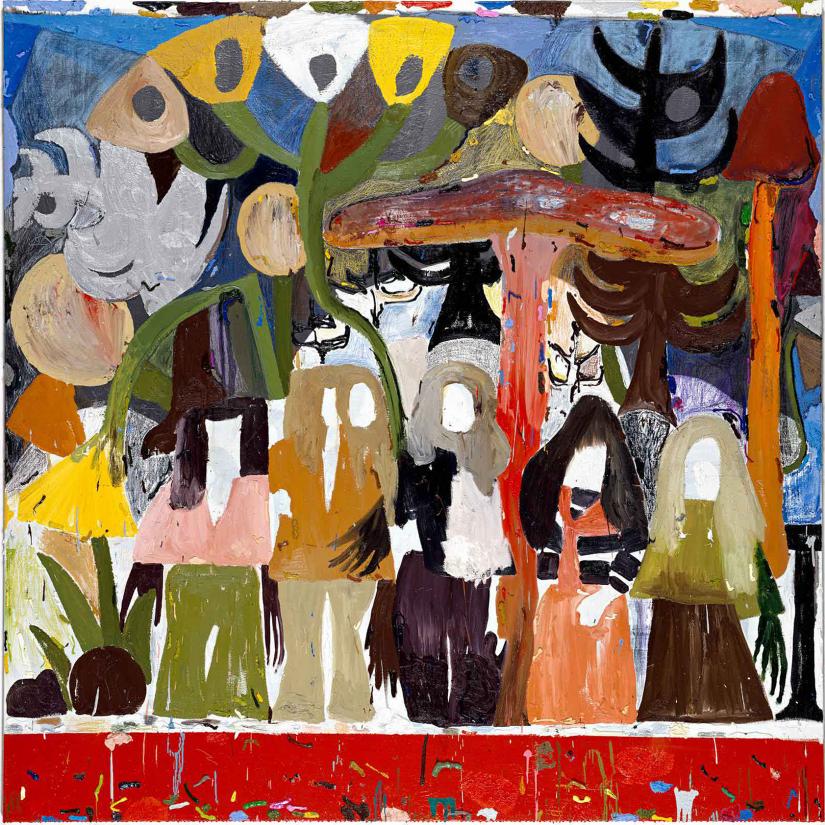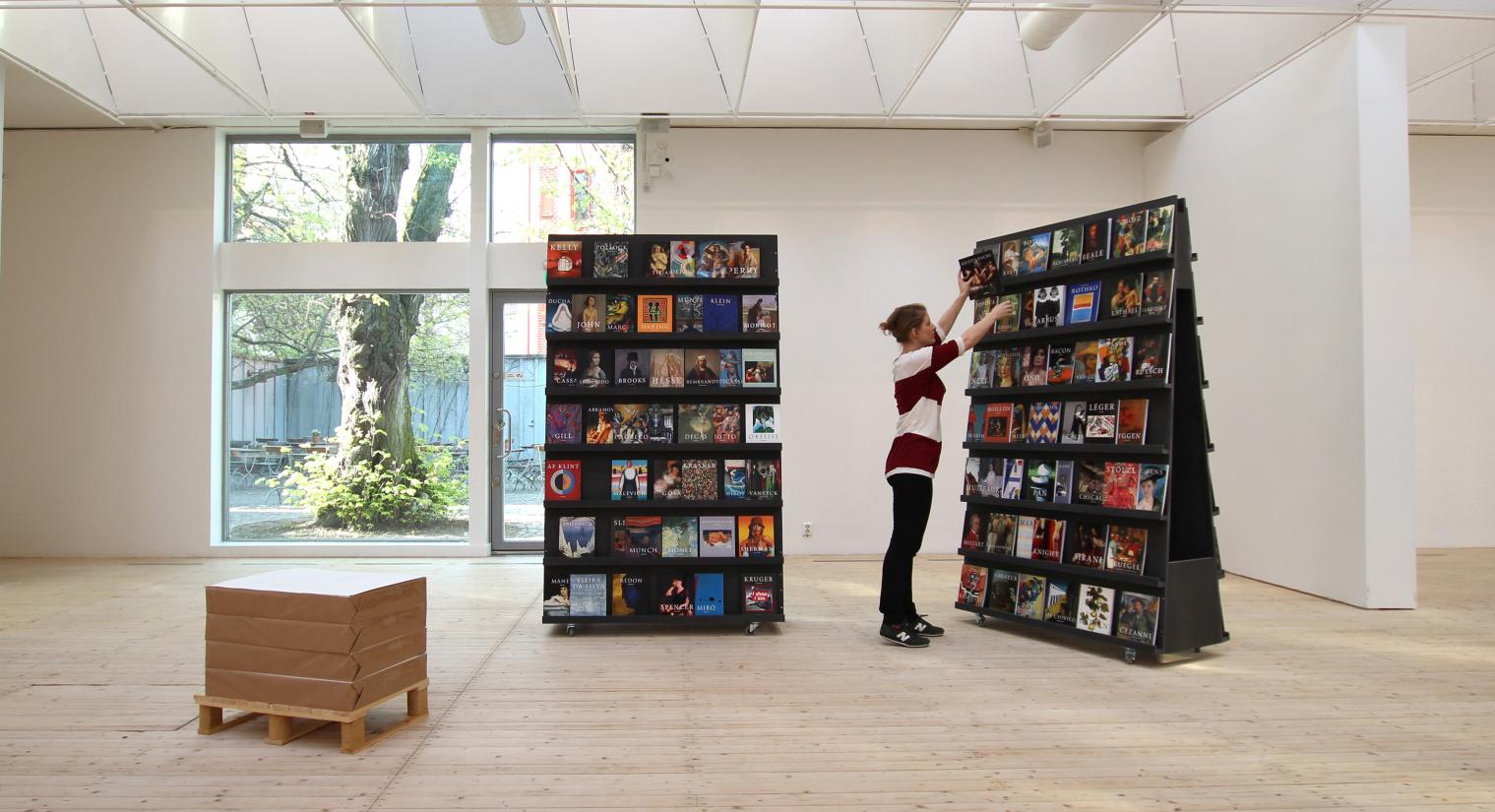Malmö Konstmuseum has an excellent collection of Nordic contemporary art, including works by a number of Danish artists. Now, the collection is expanded with four pieces by Tal R, Sif Itona Westerberg, Ejlerskov & Lindahl and Nina Beier. In a variety of media and expressions, the new acquisitions represent a selection of current developments in the Danish contemporary art scene.
Mythological relief
Sif Itona Westerberg’s Fountain installation was included in the museum’s 2020 exhibition ‘Shapeshifters’. Westerberg’s sculptures resemble reliefs from antiquity portraying mythological beings, their bodies composed of parts from several different animals. Westerberg combines classical sculpture and ancient myths with contemporary visions of the future. The installation reminds us that current genetic technology is blurring the boundaries between fantasy, mythology and reality.
A hotchpotch of leftovers
Sisters of Kolbojnik is an early painting by Tal R and an excellent example of his colourful palette and imagination. The word ‘kolbojnik’ is Yiddish and means ‘leftovers’. Tal R uses the term to describe his artistic approach: gathering up remnants and leftovers and placing them into new contexts. Sisters of Kolbojnik is characterized by intense colours and simple forms. The painting is divided into horizontal bands, each depicting a part of the story. This horizontal structure is a recurring feature in Tal R’s early work. Tal R has not previously been represented in the museum’s collection.
The missing women
Ditte Ejlerskov and EvaMarie Lindahl are the artists behind the installation About: The Blank Pages, which consists of four book display racks filled with artist monographs. Of the books, 86 were published as part of the Taschen Basic Art Series, and 92 were created by the artists in the same style but with blank pages. The blank pages represent monographs about art by women artists who, according to Ejlerskov & Lindahl, ought to have been published but are still missing from Taschen’s series. The piece thus points to the uneven gender representation in art history. The same piece is on display at the Danish Arken Museum of Modern Art, which also acquired it with support from the New Carlsberg Foundation. [Link: https://www.ny-carlsbergfondet.dk/da/hvor-er-kvinderne]
Colonialism in everyday items
Nina Beier’s sculpture series Empire includes parts of the Royal Copenhagen porcelain set ‘Empire’. The porcelain is exhibited in birdcages, carefully arranged in formations resembling miniature architecture. With the piece, Beier highlights the history of porcelain, which during the 14th century was imported from China to Europe and served as an important status symbol for well-to-do families. Today, everyday objects from China are often associated with low quality, but historically, the relationship was quite the opposite. For centuries, the European porcelain production was inferior to the Chinese. To the best of their ability, the Europeans copied the craft and chose to maintain the Chinese style as a sort of visual marker. Beier’s art opens new perspectives for our understanding of the colonial and social history of everyday objects.






